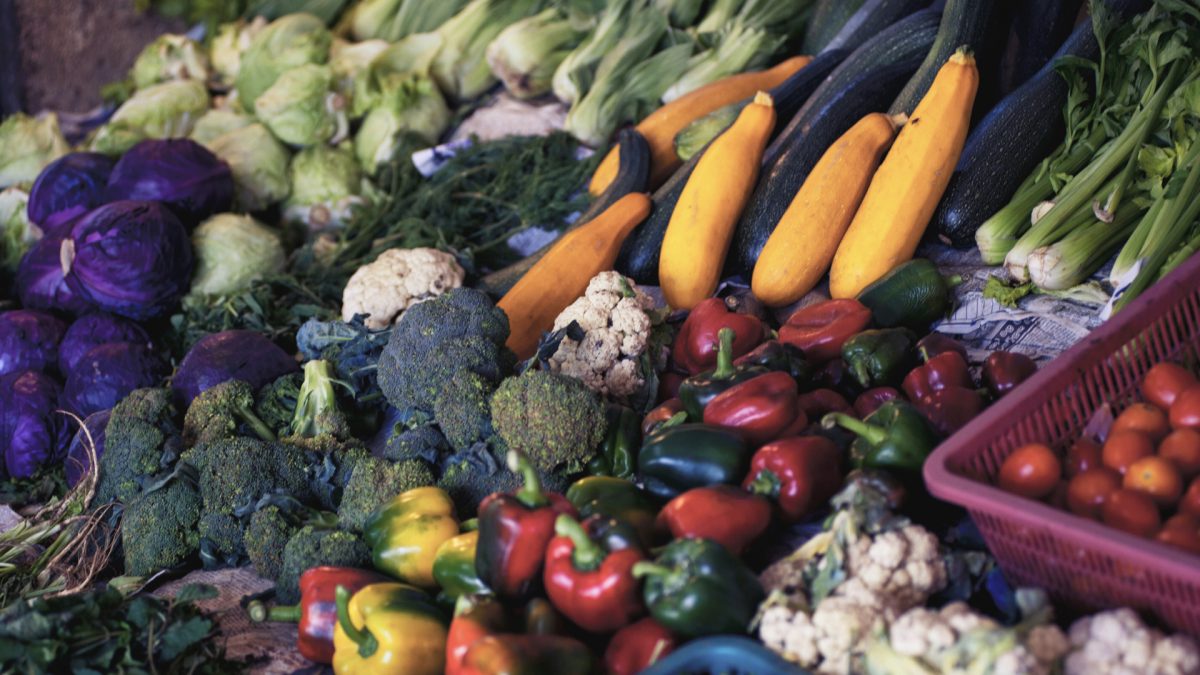Why is meat consumption a risk factor for diabetes? Why does there appear to be a stepwise reduction in diabetes rates as meat consumption drops? Instead of avoiding something in meat, it may be that people are getting something protective from plants. Free radicals may be an important trigger for insulin resistance, and antioxidants in plant foods may help. Put people on a plant-based diet, and their antioxidant enzymes shoot up. So, not only do plants provide antioxidants, but they may boost our own anti-endogenous antioxidant defenses, whereas, on the conventional diabetic diet, they get worse.
In my video, How May Plants Protect Against Diabetes, I discuss how there are phytonutrients in plant foods that may help lower chronic disease prevalence by acting as antioxidants and anti-cancer agents, and by lowering cholesterol and blood sugar. Some, we’re now theorizing, may even be lipotropes, which have the capacity to hasten the removal of fat from our liver and other organs, counteracting the inflammatory cascade believed to be directly initiated by saturated-fat-containing foods. Fat in the bloodstream—from the fat in our bodies or the fat we eat—not only causes insulin resistance, but also produces a low-grade inflammation that can contribute to heart disease and non-alcoholic fatty liver disease.
Fiber may also decrease insulin resistance. One of the ways it may do so is by helping to rid the body of excess estrogen. There is strong evidence for a direct role of estrogens in the cause of diabetes, and it’s been demonstrated that certain gut bacteria can produce estrogens in our colon. High-fat, low-fiber diets appear to stimulate the metabolic activity of these estrogen-producing intestinal bacteria. This is a problem for men, too. Obesity is associated with low testosterone levels and marked elevations of estrogens produced not only by fat cells but also by some of the bacteria in our gut. Our intestinal bacteria may produce these so-called diabetogens (diabetes-causing compounds) from the fats we eat. By eating lots of fiber, though, we can flush this excess estrogen out of our bodies.
Vegetarian women, for example, excrete two to three times more estrogens in their stools than omnivorous women, which may be why omnivorous women have 50% higher estrogen blood levels. These differences in estrogen metabolism may help explain the lower incidence of diabetes in those eating more plant-based diets, as well as the lower incidence of breast cancer in vegetarian women, who get rid of twice as much estrogen because they get rid of twice as much daily waste in general.
Either way, “[m]eat consumption is consistently associated with diabetes risk. Dietary habits are readily modifiable, but individuals and clinicians will consider dietary changes only if they are aware of the potential benefits of doing so.” The identification of meat consumption as a risk factor for diabetes provides helpful guidance that sets the stage for beneficial behavioral changes. Meat consumption is something doctors can easily ask about, and, once identified, at-risk individuals can then be encouraged to familiarize themselves with meatless options.
Plant foods may also protect against diabetes by replacing animal foods. Learn more with my Why Is Meat a Risk Factor for Diabetes? video.
What if your entire diet was filled with plants? See Plant-Based Diets and Diabetes. Find out which plants may be particularly protective with these videos: Amla Versus Diabetes, Flaxseed vs. Diabetes, and Diabetics Should Take Their Pulses.
Unfortunately, cinnamon has fallen out of favor. See my Update on Cinnamon for Blood Sugar Control.
I also have an ever-growing series on the science behind type 2 diabetes:
- What Causes Insulin Resistance?
- The Spillover Effect Links Obesity to Diabetes
- Lipotoxicity: How Saturated Fat Raises Blood Sugar
- Diabetes as a Disease of Fat Toxicity
- What Causes Diabetes?
- Can Diabetic Retinopathy Be Reversed?
- How Not to Die from Diabetes
For more on the estrogen connection, see Relieving Yourself of Excess Estrogen and Breast Cancer and Constipation.
In health,
Michael Greger, M.D.
PS: If you haven’t yet, you can subscribe to my free videos here and watch my live, year-in-review presentations:
- 2012: Uprooting the Leading Causes of Death
- 2013: More Than an Apple a Day
- 2014: From Table to Able: Combating Disabling Diseases with Food
- 2015: Food as Medicine: Preventing and Treating the Most Dreaded Diseases with Diet
- 2016: How Not To Die: The Role of Diet in Preventing, Arresting, and Reversing Our Top 15 Killers
